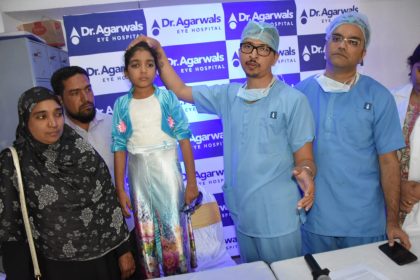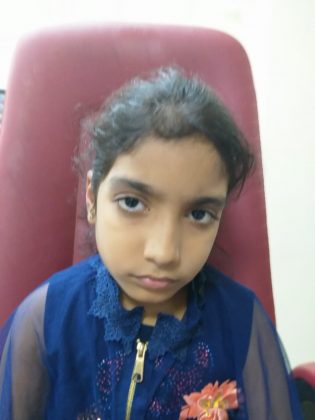- Home
- Editorial
- News
- Practice Guidelines
- Anesthesiology Guidelines
- Cancer Guidelines
- Cardiac Sciences Guidelines
- Critical Care Guidelines
- Dentistry Guidelines
- Dermatology Guidelines
- Diabetes and Endo Guidelines
- Diagnostics Guidelines
- ENT Guidelines
- Featured Practice Guidelines
- Gastroenterology Guidelines
- Geriatrics Guidelines
- Medicine Guidelines
- Nephrology Guidelines
- Neurosciences Guidelines
- Obs and Gynae Guidelines
- Ophthalmology Guidelines
- Orthopaedics Guidelines
- Paediatrics Guidelines
- Psychiatry Guidelines
- Pulmonology Guidelines
- Radiology Guidelines
- Surgery Guidelines
- Urology Guidelines
Dr Agarwal's Eye Hospital Surgeons Treat Congenital Superior Oblique Palsy

BENGALURU: A complex surgery performed by the surgeon of Dr Agarwal's Eye Hospital has successfully treated a rare condition called Congenital Superior Oblique Palsy, leading to a vertical squint and abnormal head posture to avoid double vision bringing relief to a nine-years-old female patient.
The spindle-shaped Superior Oblique muscle originates from near the nose and controls eye movements such as internal rotation (looking toward the nose), depression (looking downward), and abduction (looking away from the nose). Its weakness or paralysis (Palsy) gives rise to a vertical misalignment of the eyes.
Explaining the medical condition, Dr. Ravi, Medical Director, Senior Consultant, Cataract Oculoplasty said, “Patients avoid double vision by tilting their head, leading to an abnormal head posture. The condition in the majority of cases is present from birth (congenital). It is a rare disorder with an incidence of 3.4 cases per 1,00,000 population.”
Elaborating on the clinical presentation of patient's condition, Dr. Muralidhara Krishna, Cataract & Paediatric Ophthalmology Specialist, Dr. Agarwal’s Eye Hospital, Bengaluru, who conducted the surgery said “Due to the disorder, Fatima had developed vertical squint and an abnormal, tilted-head posture with face turned to a side and depressed chin. This had opened her to ridicule from her peers due to her distorted appearance. Even going to school had become difficult. If Fatima was left untreated, her head posture would have worsened further and there would have been permanent changes in the muscle, making surgery difficult and unpredictable. Fatima’s surgery lasted 1 hour and 15 minutes as surgeons operated on three different muscles. The patient has now got rid of her vertical squint, her eyes are straight and properly aligned, and her abnormal head posture has almost vanished. She will now need regular follow-ups once every 6 months, and treating the refractive error in her eyes.”

Dr. Raghu Nagaraju Senior Consultant, Cornea & Refractive Surgery, Dr Agarwal’s Hospital, Bengaluru said “Surgery on superior oblique muscle is very difficult technically and can cause bad diplopia (patient seeing two images of the same object) if not done expertly. That’s why many ophthalmologists simply refuse to do this surgery. As Fatima’s case shows, patients with such condition need not get disheartened because a solution is available in medical science, though it requires a meticulous examination of the eye and challenging surgery.”
 Before Surgery
Before Surgery“Congenital Superior Oblique Palsy in newborns may get unnoticed or untreated. Children may suffer severe double vision and vertical squint. They develop a head posture to decrease their double vision. If surgery is delayed, permanent fibrotic changes in muscle take place which makes the condition even worse.” added Dr. Muralidhara Krishna.

Disclaimer: This site is primarily intended for healthcare professionals. Any content/information on this website does not replace the advice of medical and/or health professionals and should not be construed as medical/diagnostic advice/endorsement or prescription. Use of this site is subject to our terms of use, privacy policy, advertisement policy. © 2020 Minerva Medical Treatment Pvt Ltd